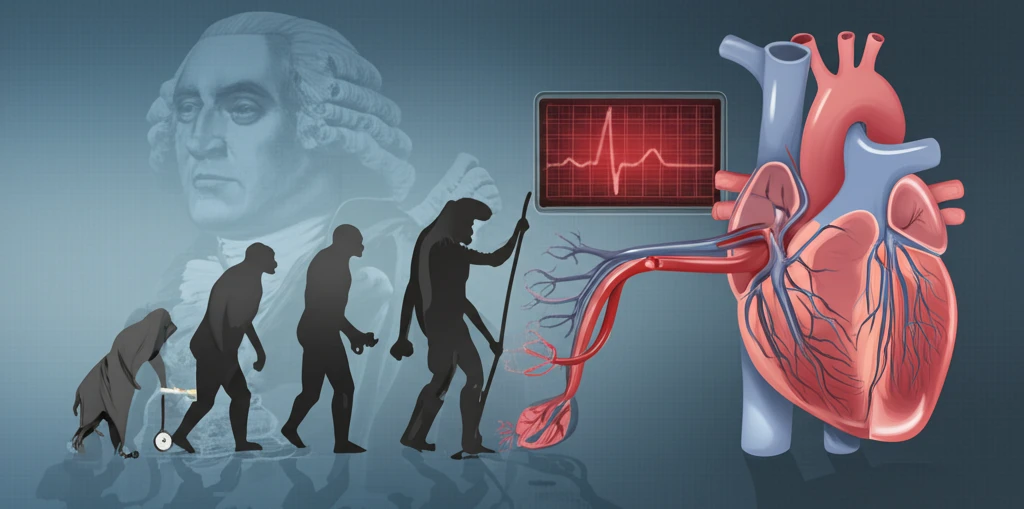
Unlocking the Heart's History: How Doctors Finally Understood Angina
"Explore the two-century journey of understanding angina pectoris, from early descriptions to modern cardiology breakthroughs and treatment."
In the wake of natural disasters, a rise in acute cardiac events is often expected. Cardiologists and emergency services become adept at managing the influx of patients, yet documenting this increase remains a challenge. Now is a perfect time to consider the evolving understanding of angina, a condition that has puzzled medical minds for centuries. While William Heberden and his contemporaries are credited with the earliest descriptions, Scottish medicine significantly contributed to unraveling this complex ailment.
The journey to understanding heart disorders and their management has been challenging and full of breakthroughs over time. William Heberden (1710-1801) is often credited with providing the first comprehensive description of angina. A Cambridge graduate, Heberden practiced in London for 34 years before retiring, even attending King George III during an illness in 1788. In 1768, he presented a groundbreaking paper on angina to the Royal College of Physicians of London.
In his Commentaries, written that same year to guide his son (though published posthumously), Heberden detailed the experiences of those afflicted: 'Those who are afflicted with it, are seized while they are walking (more especially if it be uphill, and soon after eating) with a painful and most disagreeable sensation in the breast, which seems as if it would extinguish life, if it were to increase or to continue, but the moment they stand still, all this uneasiness vanishes... The pain... very frequently extends from the breast to the middle of the left arm.'
The Progression of Understanding Angina

Heberden recognized that the disorder was progressive. 'After it has continued a year or more, it will not cease so instantaneously upon standing still, and it will come on not only when the persons are walking, but when they are lying down, especially if they lie on the left side... The termination of the angina pectoris is remarkable. For if no accident intervene, but the disease go on to its height, the patients all suddenly fall down, and perish almost immediately.'
- John Hunter’s Cardiac History: Jenner’s interest may have stemmed from the cardiac history of his teacher, John Hunter (1728-93). Hunter experienced his first heart attack in 1772.
- Jenner's Observation: John Lettsom described a later attack in 1785, noting, 'He declares he was the other day dead for four minutes, not having pulsation in the heart or arteries.'
- Hunter's Awareness: Although Jenner didn't discuss his views with Hunter out of respect, Hunter seemed aware of his condition, stating his life was 'at the mercy of any rogue who cares to anger me.'
- Post-Mortem Findings: After Hunter's death in 1793, an autopsy by his brother-in-law, Everard Home (1756-1832), revealed that 'the coronary arteries had their branches... in the state of bony tubes which were with difficulty divided with the knife.'
The Legacy of Understanding Heart Pain
From the initial descriptions by Heberden to the groundbreaking discoveries by Black, the journey to understanding and treating angina pectoris has been transformative. Today, with advanced diagnostic tools and treatments, we continue to build upon the foundational knowledge established by these pioneers. Reflecting on this history not only honors their contributions but also reminds us of the ongoing quest to improve cardiac health and well-being.
